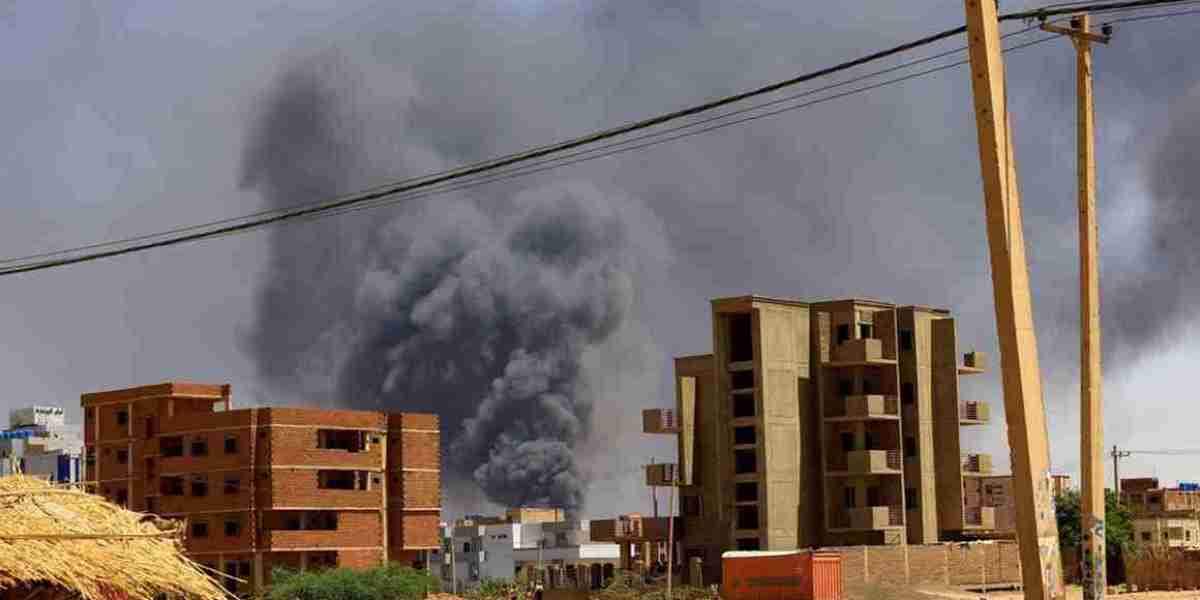In the Horn of Africa, militants allied to Al Qaeda such as Al Shabaab as well as those allied to ISIS, could utilise the lawlessness as well as mobilise fighters using unregulated social media, the report argues.
Russia will rely on private military and security companies (PSMSCs) and paramilitary groups to achieve its objectives, it says. Primarily, this is to be witnesses on the battlefield in Ukraine but will also be used “to hide Moscow’s hand in sensitive operations, and to project influence and power in the Middle East and Africa.”
In Africa, the conflicts such as that of Sudan worries Washington because it “heightens the risks of conflict spreading beyond Sudan’s borders, external actors joining the fray, and civilians facing death and displacement.”
Sudan’s war is turning a year on April 15, since the Sudanese Armed Forces and Rapid Support Forces began fighting. But that is hardly just a Sudanese affair. “With Sudan at the crossroads of the Horn of Africa, the Sahel, and North Africa, it could once again become an ideal environment for terrorist and criminal networks.
Sudan’s warring factions may be receiving more foreign military support, which is likely to hamper progress on any future peace talks, the report says. Any increased involvement by one external actor could prompt others to quickly follow suit. Russia and the UAE have previously been accused of supplying weapons to Sudanese factions.
Read: Tensions rise between Sudan army, UAE
China is seen as mainly targeting to spread its influence in Africa using various tools including propaganda. The Chinese military — People’s Liberation Army— has been spreading tentacles too, first starting with Djibouti’s Ream Naval Base in Africa and now reaching out to others. The US is also concerned that China has conducted orbital technology demonstrations, which prove China’s ability to operate future space-based weapons.
“Cyber China remains the most active and persistent cyber threat to the U.S. Government, private-sector, and critical infrastructure networks,” it says.
“Beijing reportedly is considering pursuing military facilities in multiple locations, including—but not limited to—Burma, Cuba, Equatorial Guinea, Pakistan, Seychelles, Sri Lanka, Tajikistan, Tanzania, and the UAE,” it says.
China is demonstrating a higher degree of sophistication in its influence activity, including experimenting with generative AI. TikTok accounts run by a PRC propaganda arm reportedly targeted candidates from both political parties during the US midterm election cycle in 2022.”
The US isn’t calling these rivalries ‘wars’ yet. Instead, it is labelling them ‘strategic competition’ among major powers which has led to “more intense and unpredictable transnational challenges, and multiple regional conflicts with far-reaching implications,” says the summary introduction.
The report says that an ambitious but anxious China, a confrontational Russia, some regional powers, such as Iran, and more capable non-state actors are challenging longstanding rules of the international system as well as US primacy within it.
The fear of China’s ability is seen in attempts by the US to persuade allies like Netherlands not to use Huawei technology and export of microchip technology to China.
But the biggest acceptance that the US is horrified about China’s technological advancement is the recent vote by Congress—352 to 65—to ban China owned TikTok video-sharing platform on grounds of national security. President Joe Biden says that if the bill—that is now with the Senate—reaches his desk, he will sign it despite many American companies relying on the app to make money.
The US believes that TikTok is used by the Communist Party of China (CPC)to spy on the American military, citizens and technological innovations.
Decades of cultivating ties, providing support, funding, weapons, and training to its partners and proxies around the Middle East, including Lebanese Hezbollah, the Houthis, and Iranian backed militias in Iraq and Syria, will enable Tehran to continue to demonstrate the efficacy of leveraging these members of the “Axis of Resistance” against Western hegemony.




